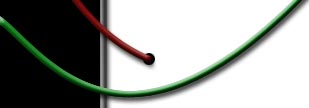|
How the
Internet Came to Be - Page 2
The birth of the ARPANET
My involvement began when I was at UCLA
doing graduate work from 1967 to 1972. There were several
people at UCLA at the time studying under Jerry Estrin, and
among them was Stephen Crocker. Stephen was an old high-school
friend, and when he found out that I wanted to do graduate
work in computer science, he invited me to interview at UCLA.
When I started graduate school, I was originally looking
at multiprocessor hardware and software. Then a Request For
Proposal came in from the Defense Advanced Research Projects
Agency, DARPA. The proposal was about packet switching, and
it
went along with the packet-switching network that DARPA was
building.
Several UCLA faculty were interested in the RFP. Leonard
Kleinrock had come to UCLA from MIT, and he brought with him
his interest in that kind of communications environment. His
thesis was titled Communication Networks: Stochastic Flow
and Delay, and he was one of the earliest queuing theorists
to examine what
packet-switch networking might be like. As a result, the UCLA
people proposed to DARPA to organize and run a Network Measurement
Center for the ARPANET project.
This is how I wound up working at the Network Measurement
Center on the implementation of a set of tools for observing
the behavior of the fledgling ARPANET. The team included Stephen
Crocker; Jon Postel, who has been the RFC editor from the
beginning; Robert Braden, who was working at the UCLA computer
center; Michael Wingfield, who built the first interface to
the Internet for the Xerox Data System Sigma 7 computer, which
had originally been the Scientific Data Systems (SDS) Sigma
7; and
David Crocker, who became one of the central figures in electronic
mail standards for the ARPANET and the Internet. Mike Wingfield
built the BBN 1822 interface for the Sigma 7, running at 400
Kbps, which was pretty fast at the time.
<-
Previous | Next
->
|








